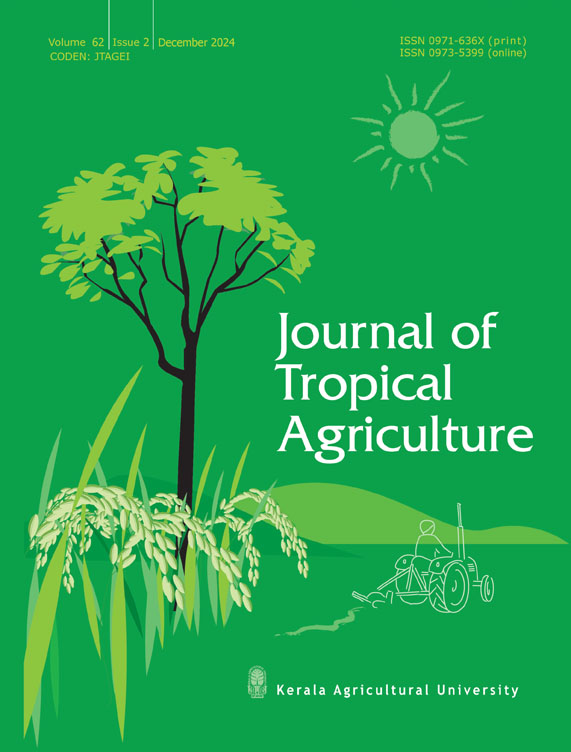Economical values, land-use security and ecological borders of oilpalm livestock farmers; lesson from West New Guinea PapuaIndonesia
Abstract
The COVID-19 pandemic has had significant impacts on various aspects of society, including the life of farmers and their relationship with the ecological border, land-use security, and economic values. How community use and do interact with land use systems, become the paramount focus of this assessment. The study areas covered four districts, i.e. Warmare, Prafi, Masni and Sidey. The total areas of study are 1,022.67 km2 (102,266.54 ha). By selecting 95 households using snowball samples technique combined with phone contacts, parameters of the data recorded. We applied three core variables i.e., economical values, land usesecurity and ecological borders, added to this perception. SemPLS applied using 3.2.9. version for assessing correlation amongst indicators. The findings stated that sociotraits of farmers constitute age 42-50 y., senior high school level, 2-6 household size, land ownership 1 unit land in average. Time spent in land 4-5 hrs./hh. Economical values explained by plant grown, plant harvested, and sold resources such as vegetables, sweet potatoes, plant ingredient, fruits and grass as forages. Asset belong to community consist of land, livestock, seed, household labor, and wheel water. Well-off household reached IDR 50-100 million. Impact on landuse security commence from no-impact to fairly impact. Feeling of community shown fairly sorrow to less sorrow. Basic need shown fairly impact to no impact (34%-37%). Ecological border indicated by the 1st land bordered by watershed, primary forest, oil palm, farming land, houses and communal ranches. Land interaction of land vs watershed is fairly benefit, followed by land vs primary forest, land vs house, and land vs communal land. Ecology indicator shown strong effect on economic indicators, followed perception on social indicators. Land use security as well shown strong effect on economic indicators, likewise perception on economic and social on economic.The relationship of the model explained R2 -Adj= 0,711 (71,10%). This means that 71.10% of the indicators can explain the model. The rest of 29,90% is explained by outside indicators which are not counted in the model.Downloads
Published
How to Cite
Issue
Section
License
Copyright © 2001-11 Kerala Agricultural University. Some rights reserved. This journal and the individual contributions contained in it are protected under copyright by the Kerala Agricultural University and the following terms and conditions apply to their use; Photocopying Single photocopies of single articles may be made for personal use as allowed by national copyright laws. Permission of the publisher and payment of a fee is required for all other photocopying including multiple or systematic copying, copying for advertising or promotional purposes, resale, and all forms of document delivery. Permission may be sought directly from the Editor, Journal of Tropical Agriculture, Department of Agronomy, College of Horticulture,, Kerala Agricultural University, KAU PO, Thrissur 680 656, Kerala, India. (Phone: +91-487-2438325; Fax +91-487-2371040; E-mail: editor.jta@kau.in. Derivative works Subscribers may reproduce tables of contents or prepare lists of articles including abstracts for internal circulation within their institution. Permission of the Publisher is required for resale or distribution outside the institution. Permission of the Publisher is required for all other derivative works, including compilations and translations. Notice No responsibility is assumed by the Publisher for any injury and/or damage to persons or property as a matter of products, liability, negligence, or otherwise, or from any use of any methods, products, instructions or ideas contained in the material herein.
